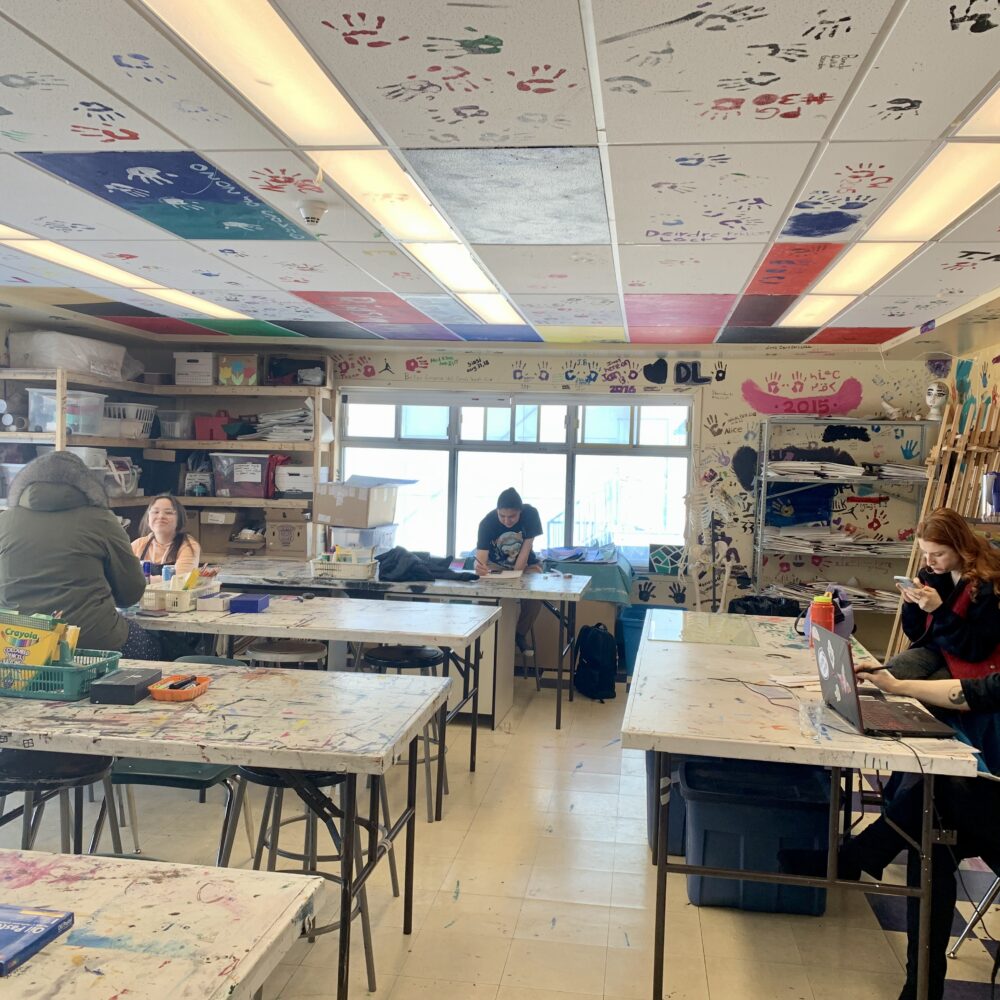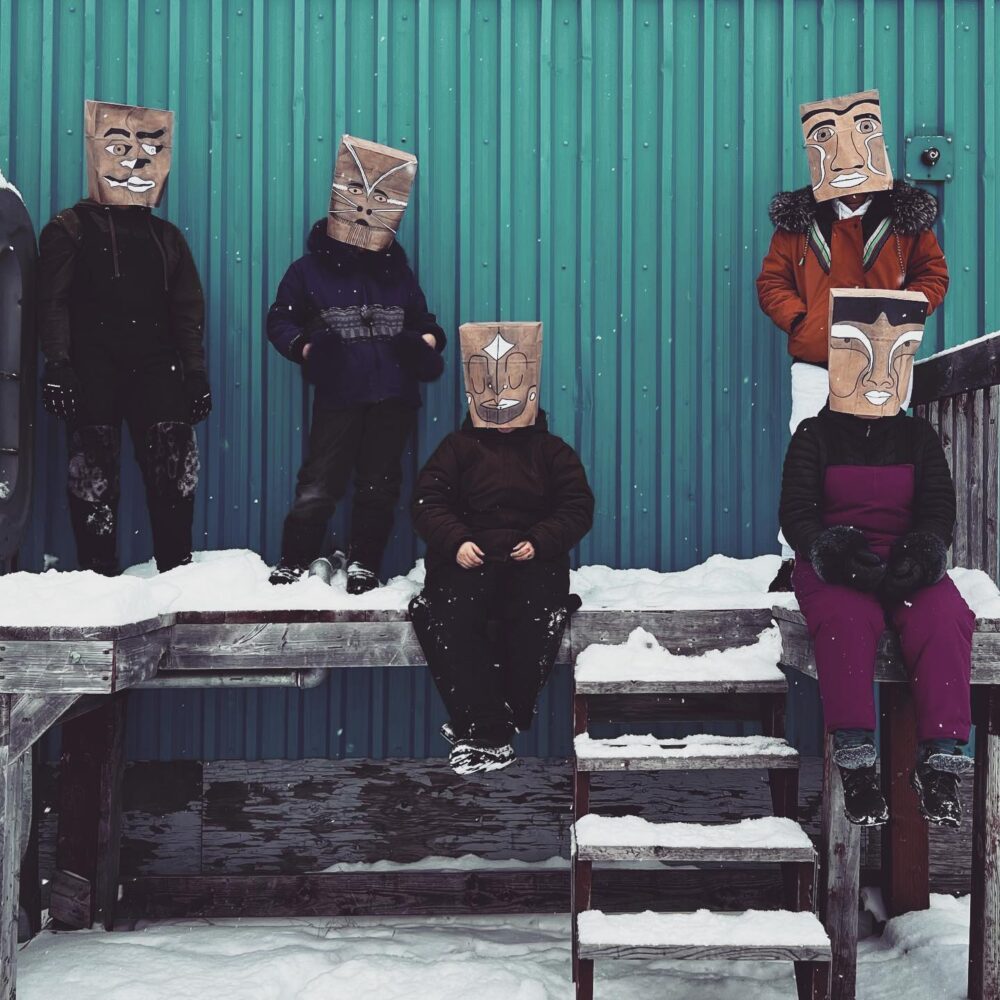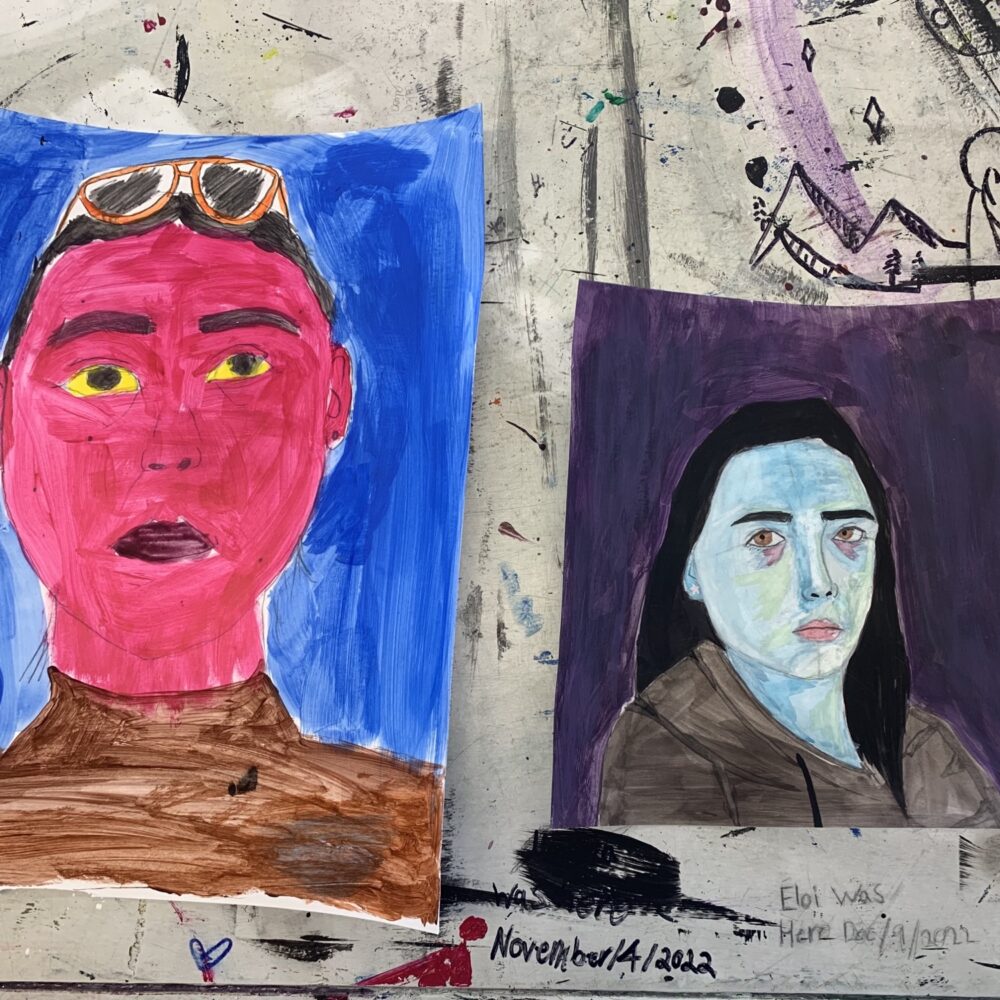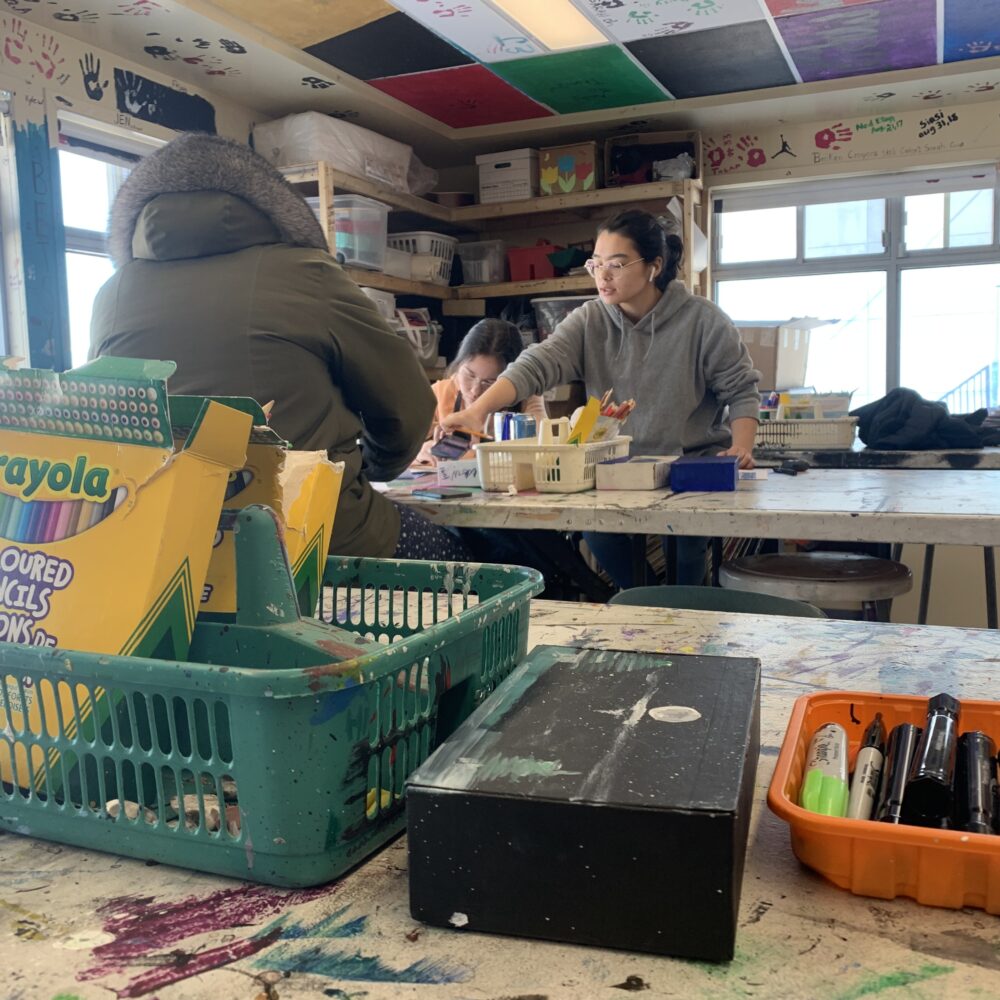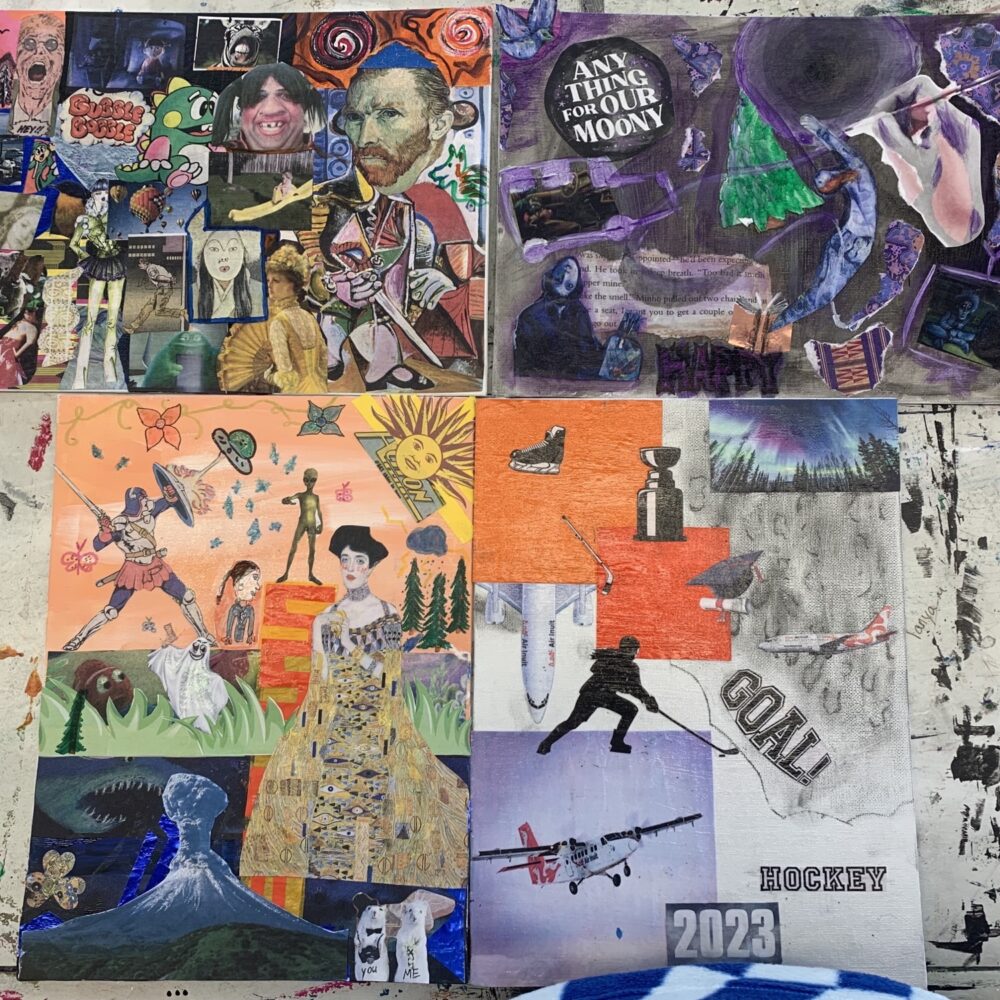Art, Creativity, and Expression at Kativik Ilisarniliriniq
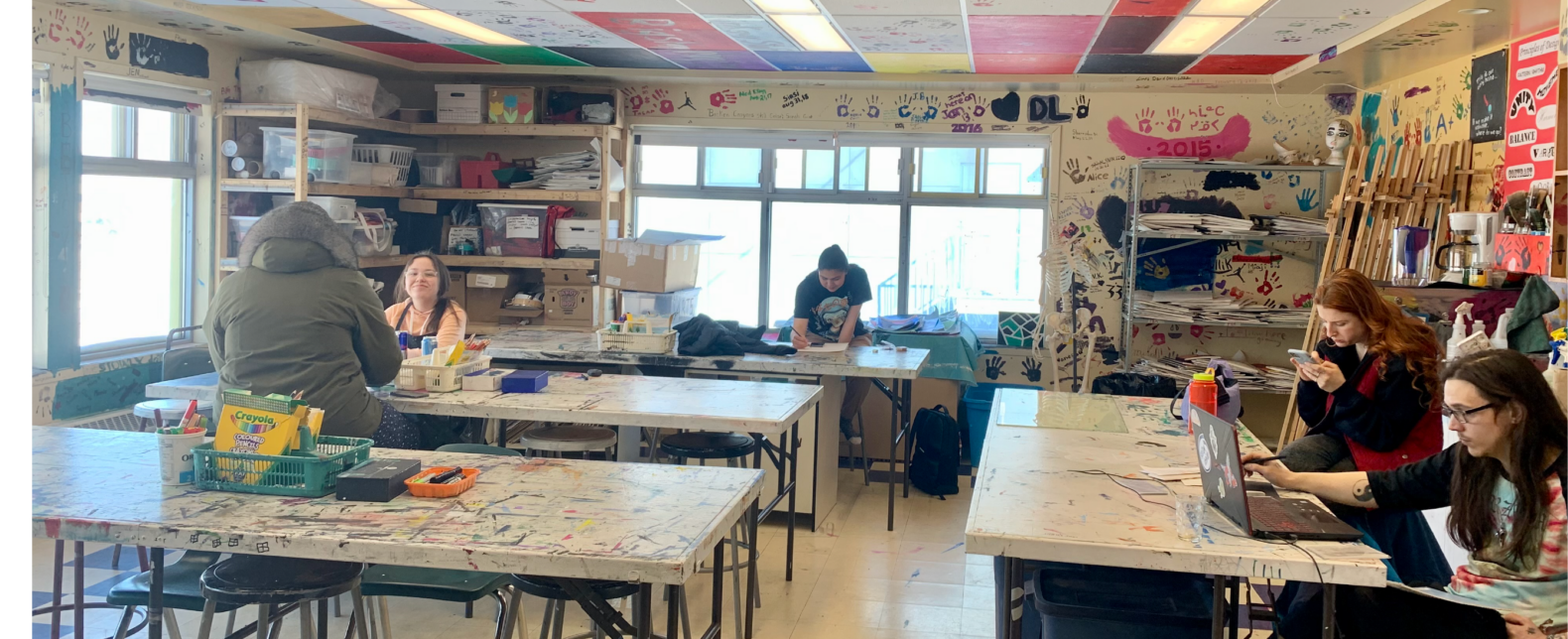
Throughout time, and some would argue possibly even before language, humans have communicated through art. Prehistoric drawings and artefacts can be found all over the world, with some objects dating as far back as 500,000 years. While the debate on what is considered art is almost just as old, there is no doubt that expression lies at the heart of creativity, as seen in samples that include wall paintings, pottery, carvings, beads, etc.
The relationship Inuit have with art is equally long and complex. Qajartalik, approximately 40 km southeast of Kangiqsujuaq, is known for its 180+ petroglyphs created by the Dorset people who lived along the coast of Nunavik approximately 2200 to 1000 years ago. Experts believe the carvings, which depict human and animal faces, reflect magico-religious beliefs. One thing is certain: the petroglyphs have survived hundreds of years as a testimony of the creativity and spiritual universe of our ancestors.
These days, Inuit art is recognized across the world and has gained professional and international notoriety. All forms of art—from prints, sculpture, textiles, graphic art, film, photography, music, and performance—testify to the wide number of artists currently working to leave their mark by sharing their passion, creativity, and culture. Whatever method an artist uses, the ultimate goal is to convey a feeling and message.
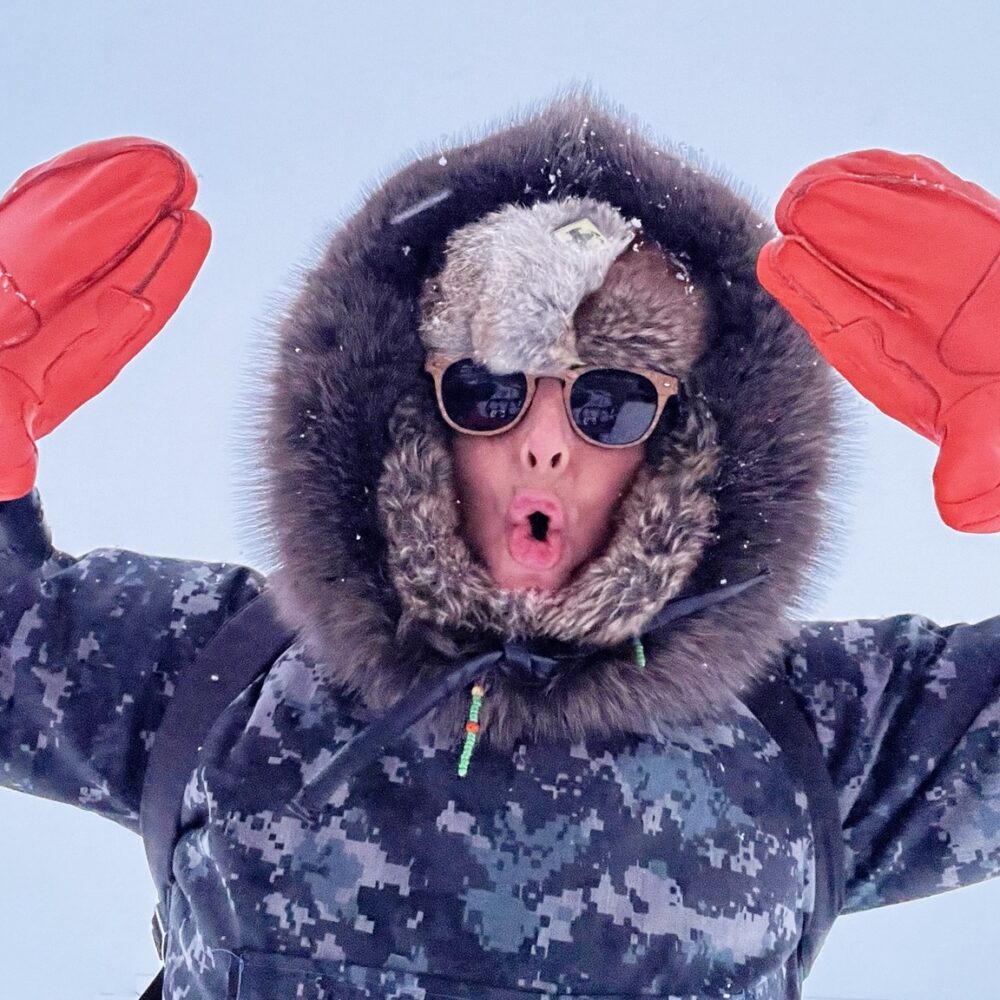
Everything is possible with art. There are so many things you can do. It can be making clothes or video games or playing an instrument or making music for a movie or a band. Creating is a doorway to developing yourself. Dare yourself to do it. Don’t be scared to leave your comfort zone.

At Kativik Ilisarniliriniq, we recognize the importance of artistic expression. We provide our students with a variety of resources and support for exploring their creativity, and art teachers play a central role.
Nathalie Claude is an experienced art teacher. She joined Kativik Ilisarniliriniq as an art teacher at Iguarsivik School this year. Reflecting on the time she has now spent working on projects with her students in Puvirnituq, she says:
“Everything is possible with art. There are so many things you can do. It can be making clothes or video games or playing an instrument or making music for a movie or a band. Creating is a doorway to developing yourself. Dare yourself to do it. Don’t be scared to leave your comfort zone.”
Elisabeth Rouleau, an art teacher at Jaanimmarik School, agrees with Nathalie. She shares a similar message:
“With art, the process is what is important. It is not always necessarily pretty or aesthetic. Some days we are tired and don’t feel like working hard. But it is important to go to class and see what you can do. The classroom is a place where you can feel safe, where you can connect with yourself and start a project whenever you are ready. Just try. You might surprise yourself with what you create in the end.”
While each school has its own individual projects and connections, there are also regional projects that all students can apply to, such as the Annual Art Trip. The latter offers selected students the opportunity to travel and participate in activities relating to Canadian art, visit museums, and learn more about Inuit culture.
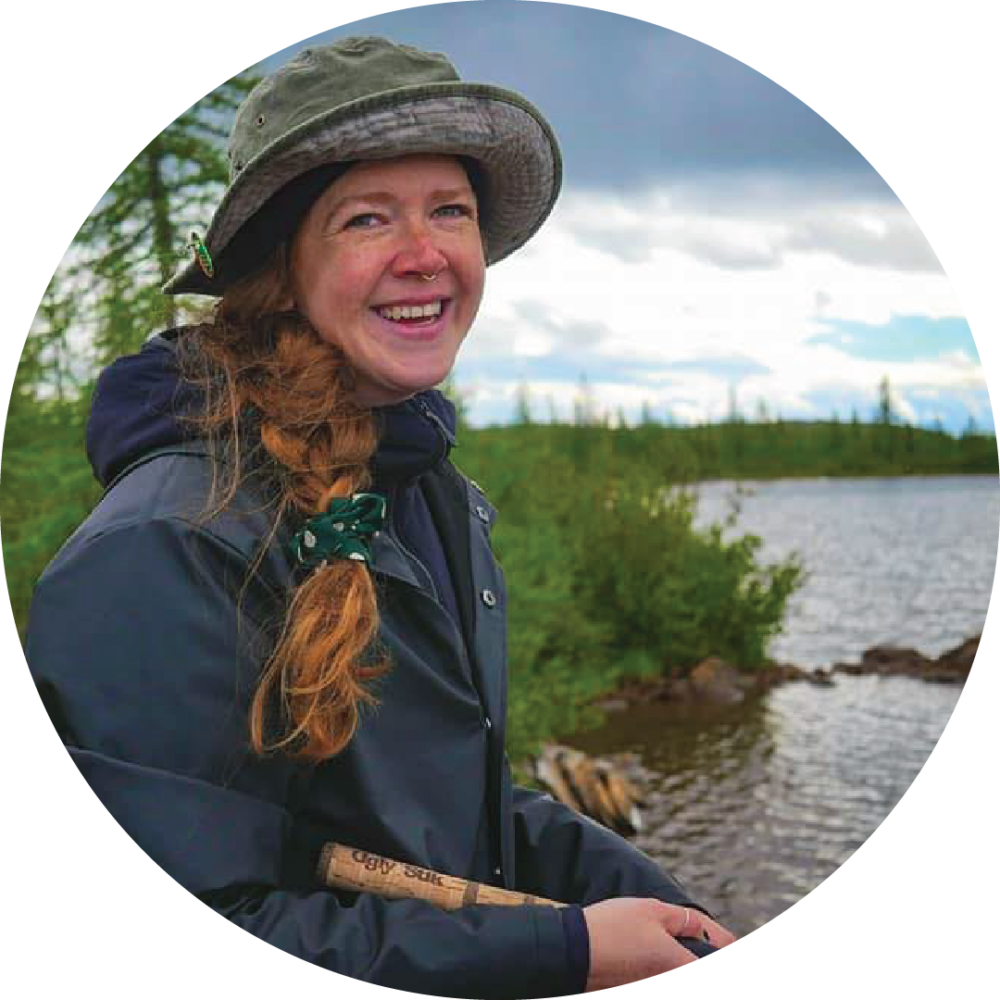
With art, the process is what is important. It is not always necessarily pretty or aesthetic. Some days we are tired and don’t feel like working hard. But it is important to go to class and see what you can do. The classroom is a place where you can feel safe, where you can connect with yourself and start a project whenever you are ready. Just try. You might surprise yourself with what you create in the end.

In addition, Nunavik-Ice, our pedagogical resources portal, also has a variety of downloadable files focusing on Inuit artists and techniques, including step-by-step manuals.
If you’d like to find out more about Inuit art, you have a few options. In Ottawa, the Canadian Museum of Nature is currently hosting “Our Land, Our Art.” This exhibition, a collaboration with the Avataq Cultural Institute, invited artists from across Nunavik to create artwork inspired by objects from the Avataq collection. It runs until October 14, 2024. There is also “Qaumajuq” at the Winnipeg Art Gallery. This art center is home to almost 14,000 pieces of Inuit art in a variety of mediums. Alternately, many online resources are available with information, such as this list by the Inuit Art Foundation featuring 10 Nunavik Artists to Know.
Are you a teacher currently finishing your degree? Or a qualified teacher looking for a new challenge in your career? We are hiring!
Stay tuned for updates on Kativik Ilisarniliriniq’s future art activities!
